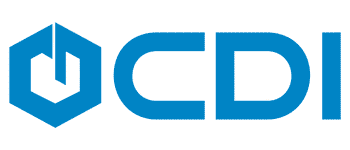Consultant's Corner: Creating a Workflow in Laserfiche Cloud
- Kyle Knebel
- May 18, 2020
- 3 min read
Updated: Jun 1, 2020

Building workflows in Laserfiche Cloud is very similar to building them in the on-premise Windows Workflow Designer. However, Laserfiche Cloud does not have all the same activities that are found in the on-premise version.
In this month's Consultant's Corner article, CDI's Software Trainer, Kyle Knebel walks us through the process of creating a workflow in Laserfiche Cloud.
Although the Activities list is not as extensive in Laserfiche Cloud, more functionality is being added at every quarterly software update. Also, the nomenclature for certain functions are different in the Cloud, for example, Start Rules are called Starting Events in the Cloud version.
To begin, Sign-in to Laserfiche Cloud with your administrative account, then click on the Grid icon:

Select Process Automation from the pop-up window.

Select or mouse-click on the Workflows option.

To begin building your Workflow, click the green New button.

In the pop-up, give your workflow a name. The description is optional. The connection profile will automatically display your repository value. Then press Next.

Begin designing your workflow in the Design module. Here you can drag workflow activities from the toolbox onto the workflow canvas, which tells the workflow what steps to do. These steps, called activities, run in sequence from top to bottom, from Green to Red.

If you want to have workflow retrieve field values from a document and rename it, drag the two activities needed from the left-hand toolbox, in this case, the Retrieve Field Values activity and the Rename activity, to the canvas. You’ll need the Retrieve Field Values activity to come before all other activities.

Note that each activity needs to be configured for its particular purpose. The right-hand pane will show you the activity properties, which will need to be modified for your needs. Here, we see an example of the Retrieve Field Values activity being added to the canvas and the fields being selected. Press the Select field to retrieve… link to bring up the Choose fields selector.

You can narrow the list of fields by choosing a template from the drop-down list. It just makes it easier to see what fields you have in a template, as opposed to listing all the fields.

For the Rename Entry activity, you’ll want to define the name of the document. This can be a static name or a dynamic name based on retrieved field values from the previous step, or both. For example, you can start the name with some static text, then use field values from the previous Retrieve Field Values activity to finish naming the document. For example, a document might be named Tax document – 05-15-2020, using the Category and Date field values obtained in the Retrieve Field Values activity.



If you want to move the document after it is renamed, you can add the Move Entry activity after the 2nd step.

All activity names can be renamed, just click on the name and it will allow you to change the name.



Prior to saving and publishing the workflow, you should Validate the configuration by pressing the check icon. It will tell you if any errors exist, as shown in the example below.


If there are no validation issues, press the Save button, then press Publish. You’ll see the spinning gears as it publishes the saved workflow to become an active workflow in the system.



Now that you’ve built the workflow, you need to tell it when it should start. The Starting Events tab on the left side is where you create new start rules.

While in the Workflow Design tab, click on the Starting Events icon on the left side. Here you can edit Starting Events or create new ones. Press the New button to begin creating a Start Event.


Give the Starting Event a name, although the Description is optional.

Next, you’ll want to set the conditions by which the workflow will start.
Select the Event Type.
Add the Conditions that will need to be true for the workflow to begin. Each colored item allows you to select 3 pieces of information that is needed to make the condition true:
1. Entry: information (in Green)
2. the logical match (in Red)
3. the value (in Blue)
In the example below, the start conditions can be translated to mean:
If a Document is created in the \1. Incoming Scans folder with the Client Documents template assigned, then start the workflow.

Next, select the workflow that will start when these conditions are met.

The last step is to confirm that the Start Event should be created, and you should press the Create button to save the Starting Event.

Congratulations, you’ve just built a Workflow in Laserfiche Cloud!
Thank you, Kyle! With your help, clients now have a better idea of how easy it can be to build a Workflow in Laserfiche Cloud.
If you have any questions or wish to speak with a CDI professional team member, contact us at support@cdi.support.




Comments